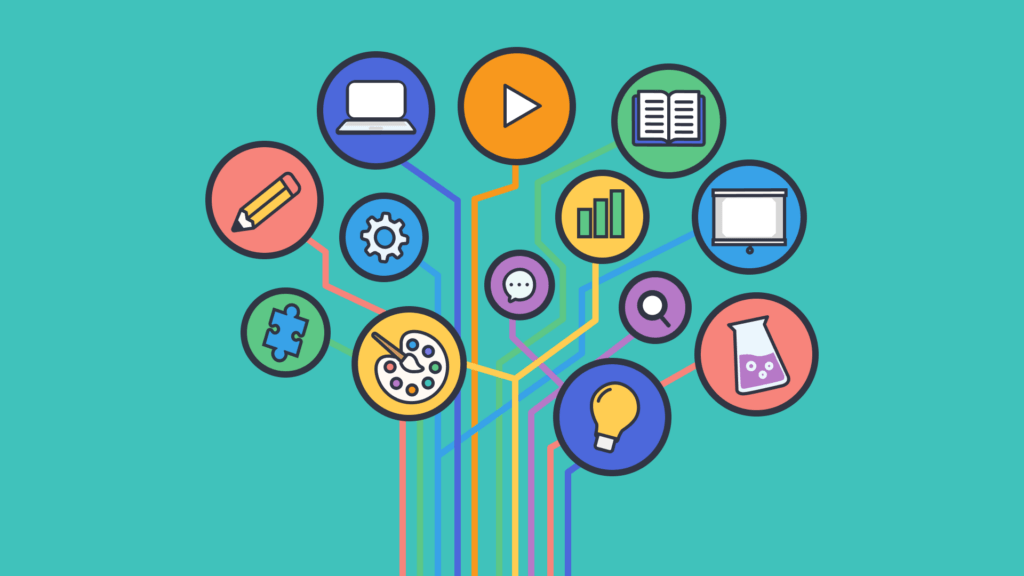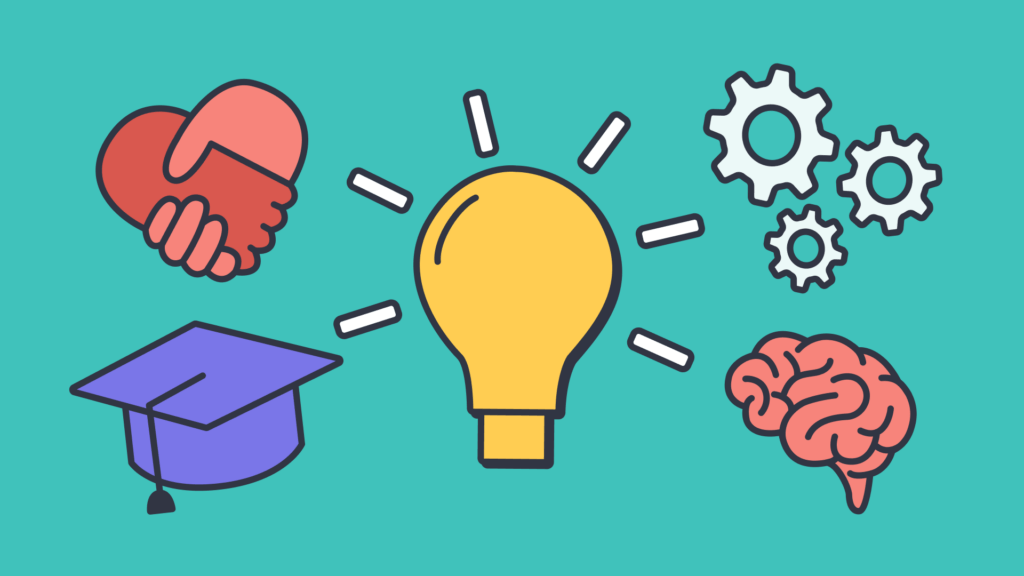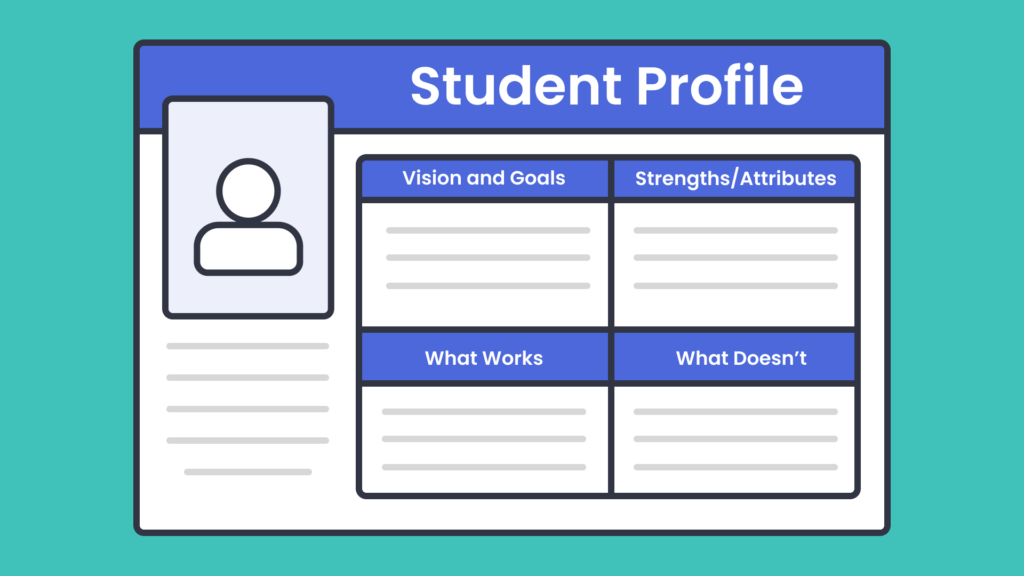What is student-centered learning? Benefits and examples
In this guide
An increase in educational technology tools alongside evolving school environments is leading to a fresh perspective on how education can best meet the needs of learners.
Student-centered learning is placing the emphasis on each individual and starting to challenge a system that was designed to educate the masses in an efficient manner.
Student-centered learning is a way teachers can ensure that instruction is effective and not simply efficient. We already know our students have a variety of strengths, weaknesses, and interests, this approach creates a learning model that ensures a human being is the central factor determining how learning experiences are designed.

Understanding the student-centered learning approach
Student-centered learning prioritizes the needs, interests, and learning styles of individual students. It seems like a fairly straightforward approach to learning, until you start to really consider all of the different elements within a school system that actually work against this idea.
- Students are required to take the same subjects.
- Deadlines are one-size fits all.
- Grade levels are determined by age instead of ability.
- Standardized assessments measure a very specific slice of skills and knowledge.
- Proficiency is communicated through letter grades.
- Classroom spaces and resources are designed for the ‘average’ student.
In the modern world, each of us has an endless number of ways to showcase our individuality. The outfit we put on in the morning represents our fashion style (or lack thereof for some of us). We can specifically curate our social media feed to tell our audience any story we choose. Within minutes we can create a customized playlist of songs to listen to, for free.
Inside the confines of a traditional school setting however, we ask students to put aside their individuality and simply fit into the system. We ignore what makes them unique and then wonder why they are disengaged.
Student-centered learning aims to disrupt the traditional model where a teacher expertly leads a class of students through a preordained set of activities to align with a specific schedule. Individual learner needs and passions become the driver of instruction in a student-centered approach. Decisions are made based on the internal factors within learners rather than the external forces of bureaucracy and standards.
The role of a teacher transforms into a facilitator tasked with creating flexible and meaningful learning experiences that have clear learning outcomes but endless possibilities for how to get there. Not every learner will end up in the same spot but each one will have the opportunity to design the path that is most meaningful for them and their future.
Some of the main characteristics of student-centered learning include:
- Active participation
- The learning environment requires students to engage in the process through interactive discussions, hands-on activities, and interactive discussions.
- Choice and autonomy
- Students are required to decide on what, when and how they learn.
- Learners take on more responsibility for their education so they develop more buy-in.
- Inquiry and discovery
- Instead of rote memorization and regurgitation of knowledge, students ask meaningful questions as a way to explore new concepts.
- Personalized learning
- Each student has a flexible and customizable plan designed to optimize their learning experience.
- The goal is to adapt the instructional plans to the individual rather than require the student to adapt to a specific learning agenda.
- Teacher as a facilitator
- Guidance and support become the primary role of the teacher rather than the purveyor of knowledge. Deciding what type of help is needed and at which points becomes the essential part of the craft.
- The student-teacher relationship becomes more of a mentor-mentee structure.

Key benefits of student-centered learning
Student-centered learning is a major shift away from the traditional way of teaching. It requires significant time and commitment to create a learning environment that is driven by the needs of learners. This change is well worth the effort because there are numerous benefits for all stakeholders involved.
1) Increased motivation and engagement
When students are actively involved in their learning process and have a say in what and how they learn, they are more likely to persevere through challenges. Increased ownership helps students realize that they are the key to the learning process and it is not just something that happens to them.
Think about a time you learned something just for fun or even out of necessity in order to accomplish an important task or goal. You can probably remember the experience well and acknowledge that setbacks may have frustrated you but did not stop you.
When we can provide choice and autonomy for students, they will take the driver’s seat and commit to the effort needed for meaningful learning.
2) Higher academic achievement
Student-centered learning is associated with meaningful gains on a variety of academic measurements. High expectations and student engagement create the right conditions for learners to succeed.
According to the Stanford Center for Opportunity Policy in Education, student-centered learning models led to
- Higher gains in achievement.
- Increased graduation rates.
- Better preparation for college.
- More persistence while attending college.
Shifting the focus away from traditional academic metrics and instead emphasizing the needs and wants of learners can actually lead to the academic proficiency that traditional educational models are aiming for.
3) Development of essential skills
A student-centered approach creates a powerful environment where students naturally build the transferable skills needed for success in the 21st century. This way of learning transcends the basic curriculum and provides both the habits and abilities that can be used in any area of life.
Because the learning experience is open, students need to focus on critical thinking and problem solving skills to progress. Simple answers to basic questions are not just waiting for them on a textbook page. They need to discover what the most meaningful questions are first. Then they can start the process of discovery.
This approach also lends itself to increased communication and collaboration. Both of the skills are consistently listed as essential ones for thriving in the workplace.
Student-centered learning is not only a benefit while they are in school, it continues long past graduation day.
4) Stronger relationships
Each year I have roughly 185 students in all of my classes – that is a lot of names and personalities to learn and remember! It also seems to get harder each year as I keep getting older, unfortunately.
Student-centered learning is a powerful way to break the proverbial ice and really begin to see each student as an individual. The conversations necessary to go on this journey help the students understand you as the teacher better, as well (Sudderth, n.d.).
When the relationship becomes about a shared goal rooted in personal progress and meaning it is difficult not to feel a deeper connection. You become their guide and partner rather than the person testing them to see if they measure up at the end of a unit.
5) Deeper understanding
Things that are earned tend to be valued more. This definitely applies to learning.
When students explore topics that are of interest to them and have the opportunity to showcase their learning in a personal manner, it is more likely to be meaningful. It also helps them make connections that extend beyond the immediate learning.
Being able to apply new information in various settings increases the likelihood that learning will be retained and truly understood.They connected with the information in a personal way so it means they can also share that knowledge from their unique perspective.
Examples of student-centered learning strategies in action
Putting student-centered learning into action requires a shift in thinking. One of the best ways to better understand this approach and start implementing it in your classroom is to look at some concrete examples.
1) Project-Based Learning (PBL)
In PBL, students work on long-term projects that require critical thinking, creativity, and collaboration. There is a lot of flexibility designed into the structure of projects so students can engage in a personally meaningful learning experience. Projects should incorporate the following:
- Student choice
- Not every student should work on the same project in the same fashion. They should be easily modified to match student interests, skills and ability levels.
- Authentic problem
- The goal should not be to solve a problem created by the teacher.
- Learners should identify real world problems and then utilize the learning process to try and solve them.
- Design Thinking
- The journey will not be linear. Testing, feedback, and revisions should be a central focus during the process.
- Use the Design Thinking video to support students with this iterative approach.
Not all projects are created equally so it is important to design them correctly in order to ensure that it is truly student-centered.
Want to learn more? Problem-based learning vs project-based learning: What are the differences? is full of tips and ideas that will keep you on the right path.
This option can take a variety of forms but they are essentially a list of different options students can choose from.
Although this idea is meant to create flexibility, the following tips will help create a structure that helps meet the learning goals:
- Provide a list of ‘must do’ options.
- Students can choose which one to complete but this way you can ensure a few critical areas are addressed.
- Offer a variety of ‘can do’ activities or assignments
- This allows students to select a number of them to complete.
- Be sure to include choice in both topics and medium.
- For example, do not limit student responses to all writing ones or all art ones.
Students enjoy the opportunity to make decisions on what they work on but it is also a nice benefit to you as the teacher. You get to see a variety of work that students are more passionate about. (That definitely helps reduce the dreaded monotony of grading!)
Take a look What is the Universal Design of Learning? to understand why this concept is so powerful.
3) Flexible learning spaces
Although this may be the most expensive option, it is probably my favorite because I see the benefits on a daily basis.
A space that adapts to the learning goals is more important than trying to adjust lessons to fit the constraints of a poorly designed room.
- Allow students to move freely to different parts of the classroom throughout the day.
- Stationary and redundant environments reduce energy and engagement.
- Let students help design the learning space.
- Have students propose different design elements specific to different tasks.
- For example:
- Quiet area for reading.
- Standing height tables for collaboration etc.
- Try to get outside or into different areas on your campus.
- If those spaces are better for the learning activities of that day.
I love when students walk into my room and tell me it does not feel like a classroom. I do not want them to act like traditional students so it was important for me to communicate that goal immediately through the use of our physical space.

4) Create learner profiles
Every student walks into our classrooms with their own unique story. Unfortunately, that story is left untold all too often. This activity is meant to celebrate individuality and track progress throughout the year. It will also serve as a cheat sheet for you to reference when designing activities and engaging in conversations.
- Use Canva or a similar design software to provide students with a basic template for this activity. Alternatively, allow students to create their own from scratch if they prefer.
- Make sure the profiles include elements such as interests, skills, weaknesses, accomplishments, and preferences.
- Throughout the year, ask students to update the profile to reflect any changes in their life.
The learner profile is a great culminating project for the end of the year. You can have students present their profile to the class and highlight how it changed over the year.
This self-reflection also serves as a powerful reminder of our never ending evolution as individuals.
SWOT Boost Your Profile is a great way to introduce this activity to students and show them how it can be used for professional success outside of school.
5) Class jobs
This idea is more popular in younger grade levels but I have found that it can also be incredibly effective at the high school level.
Jobs are determined by choice, interest, and skill set and become an amazing way to develop responsibility and a stronger sense of community.
- Create a list of job descriptions to share with students but also allow them to propose a completely new job that is not on the list.
- Conduct interviews so students can express why they want that job and what in their experience may qualify them for that position.
- Allow students to change positions at different periods throughout the year and collaborate with classmates to gain confidence in different roles.
This is another way to potentially reduce your workload while also giving students the chance to play an important role in the overall learning experience for themselves and their classmates.
It can be a bit time consuming to get it up and running but it is definitely worth it in the long run.
How to implement student-centered learning in your classroom
Student-centered learning can feel daunting and may even seem contradictory to your teacher training program, depending upon where you are placed in your career right now. The term is pretty easy to agree with but the shift in approach might be harder to implement at first than you realize.
Giving up some level of control and embracing vulnerability may not seem like the right strategy when you are in a position of authority, but that is exactly what our students need if they are going to reach their own unique potential. Continuing to be a cog in the system and simply following the demands given in school is not going to create the independent thinkers our society desperately needs.
On top of that, students are less engaged in their education when they do not feel any ownership. If we want them to find meaning in their learning then we need to let them have a voice in what it looks like.
I want you to remember this warning as you move to a more student-centred approach and revisit it frequently: you may feel discouraged and like you are going backwards as various parts of the journey.
That is normal.
In fact, when I talk to my colleagues who are trying to transform their practice to put students at the center of every decision they make, I tell them that all of the ‘bad moments’ are actually proof of why it is so important.
In my experience, student-centered learning powerfully reveals the shortcomings of a traditional education system. When a teacher is dictating every moment of a class it is easy to hide problems. When students are more in control, you will quickly see areas that desperately need to be addressed but are all too overlooked.
You will have good days and some bad days but hopefully the information in this article has convinced you that it is worth the effort.
Here are some tips:
- Content is not king
Sometimes we get so wrapped up in the subject matter we lose sight of the true purpose of schooling.
The goal is not to simply master a set of facts. Instead, schools should focus on how the content or standards can benefit the life of each student.
- Let go of control
Compliance and order is not the most important thing as a teacher.
A calm and quiet class may feel rewarding but that does not mean students are engaged or learning. Loud and messy might actually be a better predictor of impact.
- Leverage technology
We have seen a huge increase in educational technology tools and spending over the past decade but most classrooms do not look much different than before the technological boom.
Use platforms that allow for flexibility and customization. Let students explore to find information rather than simply relying on you for it.
- Foster a growth mindset
It is going to be an adjustment for everyone involved. This includes the teacher, students, their parents, and support staff. When you model a growth mindset, that can help all other stakeholders adopt a similar approach.
Check out this article for some ideas on how to incorporate growth mindset activities into your class.
- Start small
You do not need to reinvent your entire curriculum overnight!
The beginning of my journey started with adding a ‘Build Your Own Module’ project into one of my classes. I provided a general framework but students were responsible for what they learned, how they learned it, and ultimately what they produced at the end of the unit.
Lastly, remember that like everything else connected with learning, it is a continuous process. Give yourself grace and remind yourself that you are not in it alone. You now have your students on your team and they hold valuable information.
Be sure to ask. Be sure to listen. And don’t stop revising.
References:
- McKenna, B. (2014, June 17). New research shows effectiveness of student-centered learning in closing the opportunity gap. Stanford Graduate School of Education. Retrieved March 28, 2025, from https://ed.stanford.edu/news/new-research-shows-effectiveness-student-centered-learning-closing-opportunity-gap
- Peart, N. (2019, Spetember 10). The 12 Most Important Skills You Need To Succeed At Work. Forbes. Retrieved March 26, 2025, from https://www.forbes.com/sites/nataliapeart/2019/09/10/the-12-most-important-skills-you-need-to-succeed-at-work/
- Sudderth, A. (n.d.). What Is Student Centered Learning and Why Is It Important? XQ. Retrieved March 26, 2025, from https://xqsuperschool.org/teaching-learning/what-is-student-centered-learning/

Nick Schwab
briefcase iconLearning Experience Designer
Nick combines his background in psychology, education and design to create physical and digital experiences that empower, engage, and excite learners. His passion lies in constantly developing new learning pathways for students that challenge the status quo in education.
Other posts
Want more content like this?
Subscribe for blog updates, monthly video releases, trending topics, and exclusive content delivered straight to your inbox.














